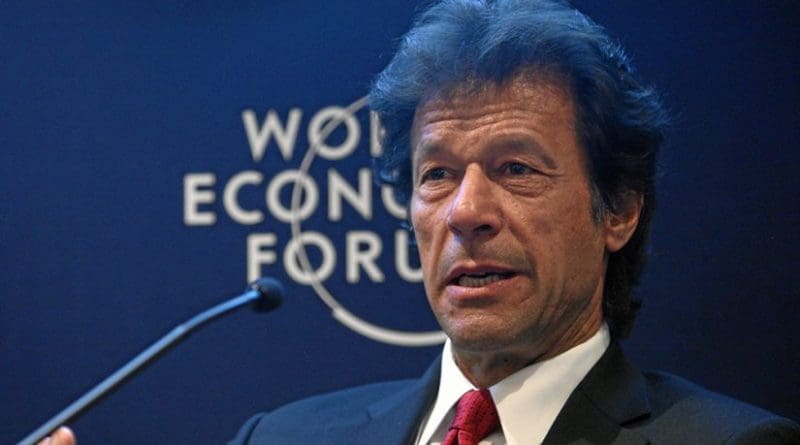Election Year In Pakistan: Key Dynamics And Prospects – Analysis
By IPCS
By Rana Banerji*
Despite several hiccups, on 19 December, the Senate of Pakistan passed the Constitution (Amendment) Bill 2017 – resulting in the amendment to Article 51 (5) of the Pakistani constitution – which will enable elections to the National Assembly (NA) to be held on the basis of the 2017 provisional census results.
Under the newly demarcated constituencies, of the 342 NA seats, Punjab will have 141 General seats and 33 Women seats (7 General and 2 Women seats fewer); Khyber Pakhtunkhwa will have 39 General and 9 Women seats (4 General and 1 Women seat added); Baluchistan will have 16 General and 4 Women seats (2 General and 1 Women seat added); and the Federal Capital Area will have 3 General seats (1 General seat added). The existing 61 General and 14 Women seats in Sindh and 12 General seats in the Federally Administered Tribal Areas (FATA) remain unchanged. The term of the present parliament ends on 31 May 2018. After the Election Commission implements these changes, elections could be held, after Ramadan, sometime in mid-August 2018.
Coincidentally (?), Pakistan’s Chief of Army Staff (COAS) Gen Bajwa addressed Senators a few hours earlier on the same day. This `in-camera’ briefing, leaked soon enough to media, laid to rest speculation about a government of technocrats prematurely replacing Pakistan’s Prime Minister Shahid Khaqan Abbasi’s team. It did not dispel persisting doubts about the Army’s interventionist clout, which re-emerged after photographs of the Director General (DG) Punjab Rangers, Maj Gen Azhar Naveed Hayat Khan, distributing cheques to Tehreek Labbaik Ya Rasool Allah (TLYR) volunteers went viral on social media on 07 Dec 2017.
This could be tested afresh in January 2018 when Pakistan Awami Tehrik (PAT) leader, Tahir-ul-Qadri resumes street agitation, asking for the sacking of Punjab Law Minister, Rana Sanaullah, as a price for the heavy handed police action during the August 2014 demonstration in Model Town, Lahore. The Justice Baqar Najfi judicial enquiry findings, which were made public on 5 December 2017, places the already beleaguered Pakistan Muslim League-Nawaz (PML(N)) regime on a weak wicket in this regard. How it counters this agitation may impinge on the prospects of Shahbaz Sharif’s prime ministerial candidacy.
Senate Elections
The next important landmark would be the Senate elections, scheduled for 2 March 2018. This poll would enhance the PML (N)’s strength, though not by enough to give it two-thirds majority. At present, the 104-member Upper House has 27 PML (N) Senators; 26 Pakistan Peoples Party (PPP) Senators; and 7 Pakistan Tehreek-e-Insaf (PTI) Senators. After the election, PML (N) will have 37 seats, PPP, 16; and PTI, 13.
Caretaker Governments
As per the 20th constitutional amendment passed in February 2012, caretaker governments have to be formed to conduct free and fair elections at the national and provincial levels. These are to be chosen through a consultative process between legislators of the ruling party and the opposition under Article 224A of Pakistan’s constitution. Though some wrangling on names can occur, fear of the Army’s ‘Damocles sword’ will possibly ensure that consensus is reached soon enough. This time, PTI Chief Imran Khan may try to get a toe-hold in, to get one or two ‘Caretakers’ of his choice in the interim set ups in Punjab and Khyber Pakhtunkhwa, also at the national level.
The elections may see a fragmentation of the right of centre vote bank, especially in Punjab, between the PML (N), PTI and the new mainstream contenders of the Islamic parties – Hafiz Saeed’s Milli Muslim League (MML) and the Barelvi factions of the TLYR and Mumtaz Qadri adherents, some possibly in the garb of Independents. The PPP and Mohajirs may hold on, respectively, to their bastions in rural and urban Sindh, though the latter may be split into various contending factions. Khyber Pakhtunkhwa may see how Imran Khan’s party copes with the twin threats of anti-incumbency and a rival ganging up of right radical Islamists led by Jamiat Ulema-e Islam (F)’s (JUI-F) Maulana Fazl-ur-Rehman. The FATA merger issue could be a thorn in several throats.
Presently, there is much speculation in the Pakistani media about possible ‘course corrections’ which a defensive Army leadership makes to cope with the mainstreaming of Islamists. A ‘divided’ judiciary is seen trying to ameliorate injured civil society sentiment about the biased handling of the disqualification of Nawaz Sharif and the lease of life given to Imran Khan. Though Nawaz Sharif’s charisma and `victim’ narrative remains the prime ‘vote-catcher’ for PML(N), Imran has not done anything too controversial since his `disqualification survival’ and currently, seems slightly ahead of Shahbaz Sharif in the prime ministerial race.
Role of the Army
Gen Bajwa seems well in control now of his collegiate leadership group. 2018 will see retirements of only five lieutenant generals in October. These vacancies may enable slotting of some aspirants as corps commanders. How the Army manages to balance or control emerging political equations will be of greater interest. Overall, it may be content to let political permutations evolve as long as a democratic facade is maintained and the new political leadership at the centre does not question its control of security, neighbourhood and nuclear policy.
Indo-Pak Relations
On relations with India, much will depend on the International Court of Justice’s verdict in the Kulbhushan Jadhav case. Pakistan’s latest going back on assurances on how to treat his mother and wife does not provide any ground for optimism. Neither should one expect any change of heart on the Mumbai 26/11 terror accused trials or generally, in how the Army keeps cocooning favoured ‘non-State’ actors.
* Rana Banerji
Member, Governing Council, IPCS, & former Special Secretary, Cabinet Secretariat, Government of India

